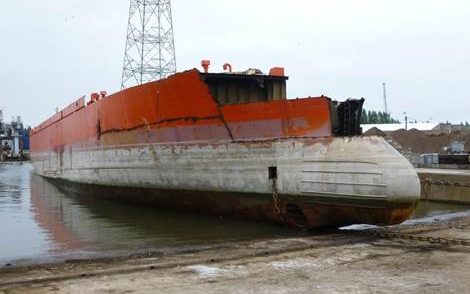IMO 2020 and demolition volumes

Is there a discernible scrapping trend brought about by the eight-week-old global sulphur cap? Jason Jiang investigates.
The new IMO sulphur regulations, coupled with continued recession in the dry bulk chartering market, has forced owners to push a large number of less fuel-efficient vintage ships to scrapyards in the first two months of this year. The trend is expected to be sustained in the first half of this year, as a result of the outbreak of coronavirus in China, which could have a further downward impact on the freight market.
“We are already seeing an increased supply of vessels for recycling due to the IMO 2020 regulations,” says Jamie Dalzell, a senior trader at cash buyer GMS.
According to Dalzell, around 15 capesize bulkers and VLOCs have already been sold for recycling this year as dry charter earnings suffer, with rates seen for much of this year below operating levels already.
Dalzell has also seen a steady supply of containerships this year heading from demo, particularly from the large liner companies whilst there have been fewer tankers than average sent for recycling in the first eight weeks of the year.
“We do expect a sustained supply of particularly dry bulk and container vessels for scrapping this year as it becomes increasingly challenging to run vessels due to depressed freight rates and higher VLSFO fuel costs and scrubber installation costs,” Dalzell says.
Allied Shipbroking described the state of imbalance in the ship recycling market in a recent report.
“The dry bulk sector started on the wrong foot from the very start of the year, with the scene in the freight market being a picture of complete disarray and freight earnings reach in some cases all time lows. Given this, an excessive tonnage capacity has been pushed towards the demolition market over the past few days, with breakers seemingly looking to accommodate as much tonnage as possible,” Allied Shipbroking says.
Seasure Shipbroking’s latest Green Report, released on February 19, shows that so far in 2020 there have been 16 capesize bulkers sent to scrapyards, comparing with only five in same period in 2019.
“We note that these vessels are all without scrubber. This is a sign of the currently low dry bulk market and owners choosing to recycle vessels rather than waiting for an upswing in the market and committing more capital to maintaining vessels and passing upcoming surveys,” says Sam Tucker, an analyst at VesselsValue.
“Additionally the clean tanker markets are low and this is why we’re seeing an increase in the small tanker recycling activity,” Tucker adds.
Tucker believes the advent of IMO 2020 sulphur rules have impacted scrapping rates too as the new regulatory framework is encouraging owners to decide to recycle vessels earlier. Tucker estimates that IMO 2020 and the poor charter market will result in recycling rates being high in the first half of 2020.
Braemar ACM Shipbroking has also noticed that the demolition volume of feeder boxships is increasing.
“We are seeing feeders trickle onto the market as employment opportunities are currently few and far between,” Braemar said in its latest weekly container briefing report.
James Frew, a director at Maritime Strategies International, reckons ultimately the impact of IMO 2020 on scrapping volumes will see older ships being scrapped as higher fuel costs reduce the net earnings and desirability of older, less fuel efficient vessels.
“To date this effect has been dwarfed by wider issues in the market, with coronavirus coupled with seasonal weakness driving down earnings with the problems particularly severe in the dry bulk market where they were compounded by strong newbuilding deliveries in January. This has resulted in significant scrapping of bulkers but we would attribute that principally to the market rather than the narrow impact of IMO 2020,” Frew says.
Clarkson Research Services noted in a recent report that many owners are not hesitating in disposing of their vintage units due to the continued depressed freight market, which in the short term has no clear outcome on when it will bottom out. This has been further compounded by the coronavirus outbreak.
“With ports now placing restrictions on vessels coming in and out of China, as well as trade routes and deliveries in the region, this could have a further downward impact on the freight market and sentiment as a whole. This could in turn, cause more vessels to come for recycling and provide the industry with a rush of tonnage not seen since the early months of 2018, when many feel the market was last at its most prominent,” Clarksons suggested.
